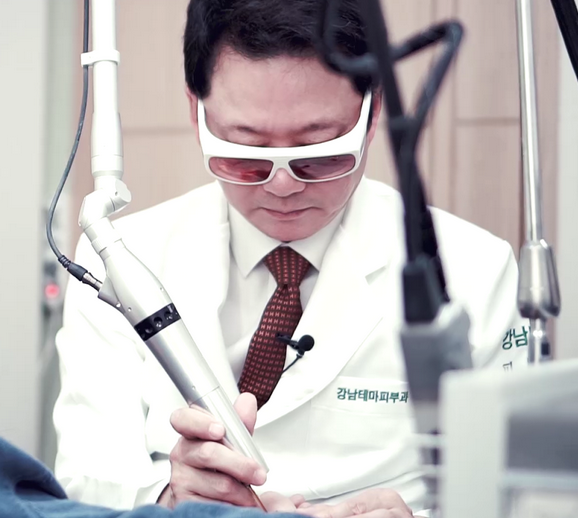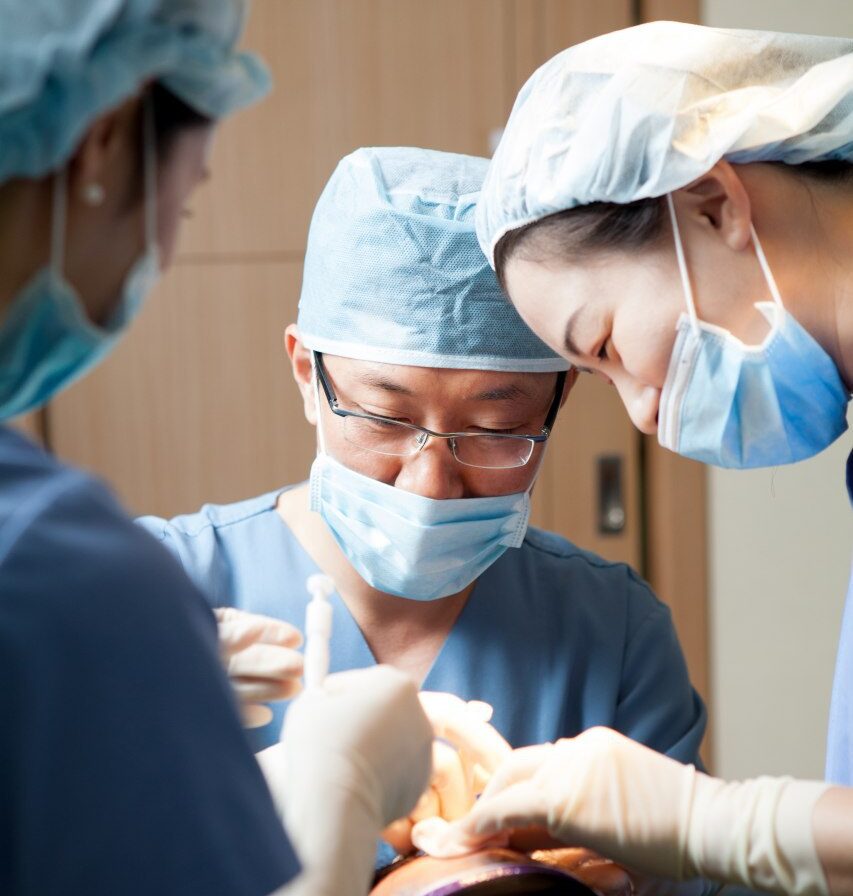Non-Incisional Ultrasound
Have you ever wondered what lies beneath the surface of your scalp, the hidden forces that orchestrate the growth and vitality of your hair? Non-incisional ultrasound, a pioneering technology in the realm of medical imaging, holds the key to unlocking these secrets. Imagine a gentle glide of a transducer across your scalp, and in a matter of seconds, high-resolution images emerge, revealing the health of your hair roots, the density of your follicles, and the blood flow nourishing your scalp.
Several approaches have been developed over time to deal with hair loss problems, with hair transplantation being one of the more effective and well-liked choices. Hair follicles are often moved from donor locations to recipient areas by making a few tiny incisions in the scalp during a hair transplant operation. However, non-incisional ultrasonic techniques have come to light as a novel method of hair transplantation in recent years. This article explores the advantages of non-incisional ultrasound in hair transplantation as well as its prospective effects on the hair restoration industry.
The Science Behind Non-Incisional Ultrasound

Non-incisional ultrasound uses high-frequency sound waves to create images of the internal structures of the body. The sound waves are transmitted through the skin and other tissues, and they are reflected to the transducer as they encounter different densities of tissue. The transducer converts these reflected sound waves into electrical signals, which are then processed by a computer to create an image.
Non-incisional ultrasound is a safe and effective way to image many parts of the body, including the scalp. It is a non-invasive procedure, which means that it does not require any cuts or incisions. It is also a painless procedure, although some people may experience a slight warming sensation during the procedure.
Non-incisional ultrasound is a valuable tool for diagnosing hair loss and other scalp conditions. It is a safe, effective, and painless procedure that can provide detailed images of the scalp and its underlying structures.
The Traditional Hair Transplant Process
Understanding the conventional hair transplant procedure is essential before learning more about non-incisional ultrasonography. The two most popular techniques are follicular unit extraction (FUE) and follicular unit transplantation (FUT).
1. FUT (Strip Harvesting): In this procedure, a strip of skin with hair is excised from the donor site, which is typically the sides or back of the head. For transplantation, the strip is subsequently divided into individual grafts. This procedure leaves the donor location with a linear scar.
2. FUE: FUE includes utilizing a micro-punch to separately harvest hair follicles from the donor area. Even while it does not leave a linear scar like FUT, it nevertheless necessitates several small incisions to put the grafts in the recipient area.

The Benefits of Non-Incisional Ultrasound Approach
During the hair restoration procedure, non-incisional ultrasound is a revolutionary technique that does away with the necessity for incisions. Non-incisional ultrasound employs ultrasound technology to make tiny channels in the scalp, enabling for the precise positioning of hair follicles, as opposed to making tiny cuts in the recipient area for graft insertion. There are several distinct advantages to this non-invasive method:
- Minimal Scarring: The most significant advantage of non-incisional ultrasonography is that it doesn’t leave any obvious scars in the donor or recipient locations. Many people may find it unsettling since traditional hair transplant techniques frequently leave patients with linear scars or microscopic puncture scars in the donor and recipient locations.
- Faster Recovery: Patients heal more quickly because there are no incisions. A quicker recovery period is brought on by reduced post-operative pain, swelling, and discomfort. Patients can resume their regular schedules sooner.
- Reduced danger of Infection: By removing the necessity for surgical incisions, non-incisional ultrasonography lowers the danger of infection and other consequences brought on by exposed wounds. This lessens the invasiveness and safety of the treatment.
- Natural Results: The ultrasound technology utilized in non-incisional procedures enables fine control over the depth and angle of the microchannels, producing hair growth patterns that look natural. To perfectly match a patient’s desired appearance, hairlines, and density can be meticulously adjusted.
- Minimal Bleeding: Non-incisional ultrasonography is almost entirely bloodless, which is comforting for both patients and doctors.
- Less Pain: Compared to conventional techniques, the procedure is less painful both during and after the treatment. Patients who might be concerned about the discomfort connected with surgical treatments may find this particularly alluring.
- No Shaving Necessary: Unlike conventional techniques, which frequently include shaving the recipient area to help with graft placement, non-incisional ultrasound enables hair transplantation without the need to shave the existing hair, making it more discrete.
The procedure of Non-Incisional Ultrasound
Initial consultation
A first consultation with a licensed and skilled hair transplant surgeon kicks off the procedure. Suppose you are a good candidate for a non-incisional ultrasonic hair transplant. In that case, the surgeon will evaluate your overall health, hair loss, and the availability of donor hair during this appointment.
Hairline Style
The surgeon will collaborate with you to create a natural hairline that aligns with your cosmetic objectives if you are approved as a good candidate for the operation. This style is essential for achieving a beautiful, natural appearance.
Preparation
You will be required to wash your hair the day before the procedure so that it is clean and dry when you show up at the clinic. You might be told to dress comfortably and refrain from taking any blood-thinning drugs before surgery.
Anesthesia
To numb the donor area (often the back or sides of the head), a local anesthetic is applied. While the treatment is being done, you will be conscious but not in pain.
Application of ultrasound
Microchannels are made in the recipient area (the area where hair will be transplanted) using specialist ultrasonic equipment. The depth and angle of these microchannels are precisely controlled by the surgeon to guarantee the placement of the hair follicles. The outcomes of this technology are realistic-looking.
Graft removal
Using a micro punch, the surgeon or their staff will remove each hair follicle from the donor area. This phase is comparable to the follicular unit extraction (FUE) method, however, recipient-area incisions are not necessary.
Graft Position
The harvested hair follicles are carefully inserted into the microchannels after they have been formed. To obtain a realistic appearance, the surgeon pays great attention to the angle and density of the hair.
Following up and finishing
The surgical team carefully checks the graft placement throughout the surgery to make sure they are positioned and oriented correctly. Depending on how many grafts are being implanted, the complete procedure could take several hours.
Postoperative Care
The surgeon will give instructions for post-operative care once the surgery is finished. These may include recommendations for gentle hair washing, staying away from physically demanding activities, and keeping an eye out for infection indicators. Compared to conventional procedures, patients often only endure minor post-operative discomfort.
Recovery and aftercare
Patients can anticipate a quicker recovery than with more conventional hair transplant techniques. Hair growth starts out gradually, and it takes several months for the full effects to show. To track development and resolve any issues, follow-up visits with the surgeon are crucial.
What is the Ultrasound Technology used for the procedure?
The term “ultrasound-assisted hair transplantation” refers to the use of ultrasonic technology in non-incisional ultrasound hair transplant operations, which enables surgeons to precisely build microchannels in the recipient area without the use of conventional incisions. One of the most important aspects of the treatment is the ultrasound machine employed. A handheld tool that emits high-frequency ultrasound waves is the ultrasound equipment utilized in non-incisional ultrasonic hair transplant operations. The scalp’s microchannels, where hair follicles will be inserted, are specifically intended for this purpose. To ensure accurate placement of hair follicles, the device usually incorporates a probe or tip that can be modified to manage the depth and angle of the microchannels.
Non-incisional ultrasound hair transplants create ultrasound waves that cause minute, controlled disruptions in the tissue of the recipient area. Microchannels or microscopic apertures that act as entrances for the transplanted hair follicles represent these disturbances. The surgeon can change the length and angle of these microchannels to match the patient’s natural hair growth pattern. It’s vital to remember that different clinics and surgeons may employ different ultrasound technology and specialized instruments. To achieve the best outcomes for their patients, surgeons who undertake non-incisional ultrasonic hair transplant treatments receive extensive training in its use.

Aftercare
Non-incisional ultrasound is generally a safe and non-invasive procedure that doesn’t require any special aftercare. However, there are a few things you can do to help ensure your comfort and well-being after the procedure.
Here are some tips for aftercare following non-incisional ultrasound:
- Apply a gentle moisturizer to the area where the transducer was placed. This can help to prevent irritation and dryness
- Avoid scratching or rubbing the area. This can cause discomfort and may increase the risk of infection
- Wear loose-fitting clothing that does not rub against the area. This can help to prevent irritation.
- Avoid strenuous activity for 24 hours after the procedure. This can help to prevent pain and swelling.
- If you experience any pain, swelling, redness, or itching, contact your doctor.
Why Root Hair Transplantation Clinic

We will set the standard for hair transplants. Root Hair Transplant has a long-term goal of continuously helping people with hair loss. At Root Hair Transplant, we give customized hair transplants to all those who need them. We also use the latest technology and offer a pain-free, comfortable experience. With its high success rate and cost-effective treatment, Root Hair Transplantation Clinic is the clear choice for anyone considering non-incisional ultrasound for hair. Root Hair Transplant is proud to provide quality care and service, making the solution long-lasting. Don’t wait any longer. Schedule a consultation with Root Hair Transplantation Clinic today and take the first step towards the hair you’ve always wanted.
FAQ
For people with androgenetic alopecia (pattern baldness) and those looking for minor hair restoration, non-incisional ultrasound is the best option. In cases of severe hair loss or alopecia with scarring, it might not be the best choice.
Depending on how many grafts need to be transplanted, the procedure’s length might vary, but it is typically shorter than using conventional techniques. But every situation is different.
After a non-incisional ultrasonic technique, hair growth happens gradually, with complete results being noticeable in 8 to 12 months.
Conclusion

The use of non-incisional ultrasound for hair transplantation is a significant development in the field of hair restoration. It has grown in favor among those wanting hair transplantation because it doesn’t require any incisions and has various benefits like little scarring, a quicker recovery, and natural results. It’s crucial to balance the advantages with any costs and limits that may be involved. People should speak with a trained and experienced surgeon before having any hair transplant procedures done to find out which approach will work best for their unique requirements and expectations. The future of hair restoration is extremely promising thanks to non-incisional ultrasound’s capacity to produce undetectable, natural-looking outcomes.
